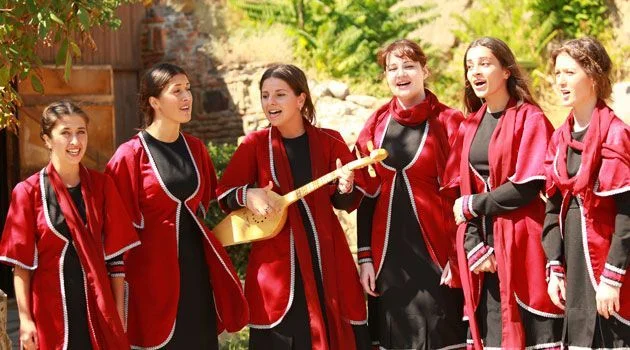Polyphonic Singing
The opportunity to listen to the breath-taking harmonies sung by Georgian voices is a magical experience. Georgian polyphony has a haunting, resonant vocal quality and striking harmonic convergences unlike anything in European music.
Polyphonic music is deeply anchored in Georgian culture. Recognised by UNESCO as part of the world's treasured living heritage, the distinctive sounds are still heard today down cobbled city streets, across vineyards and around dining tables.
Every region of Georgia has its own specific musical dialect and style of performance but they all share the same intonation and harmonic characteristics.
Georgian musical instruments can be overshadowed by the country's rich vocal traditions but they are also important and often played to accompany polyphonic songs. Among the most popular instruments are the larchemi (Georgian panpipe), stviri (flute), gudastviri (bagpipe), changi (harp), chonguri (four stringed unfretted long neck lute), panduri (three stringed fretted long neck lute), bowed chuniri (a fretless viol) and a variety of drums.
After Christianity was proclaimed in Georgia, a new genre of church polyphony developed which achieved great heights with the founding of music schools, particularly at the monasteries of Gelati and Ikalto. Georgian historians and musicologists believe that the Georgian language and polyphonic singing tradition must have been in use in the church as early as the 7th or 8th centuries and was well established in Georgian liturgy by the 10-11th centuries.









